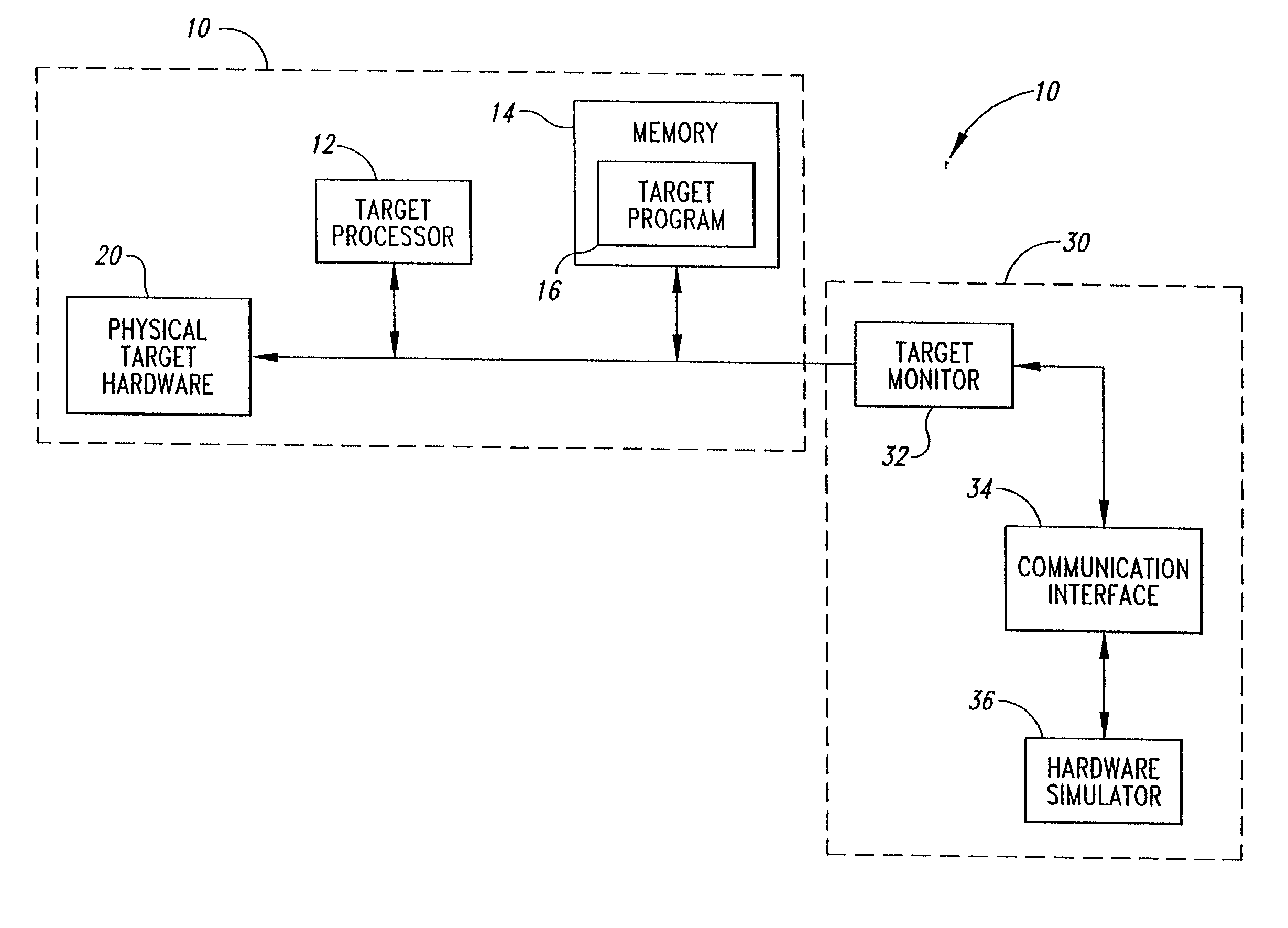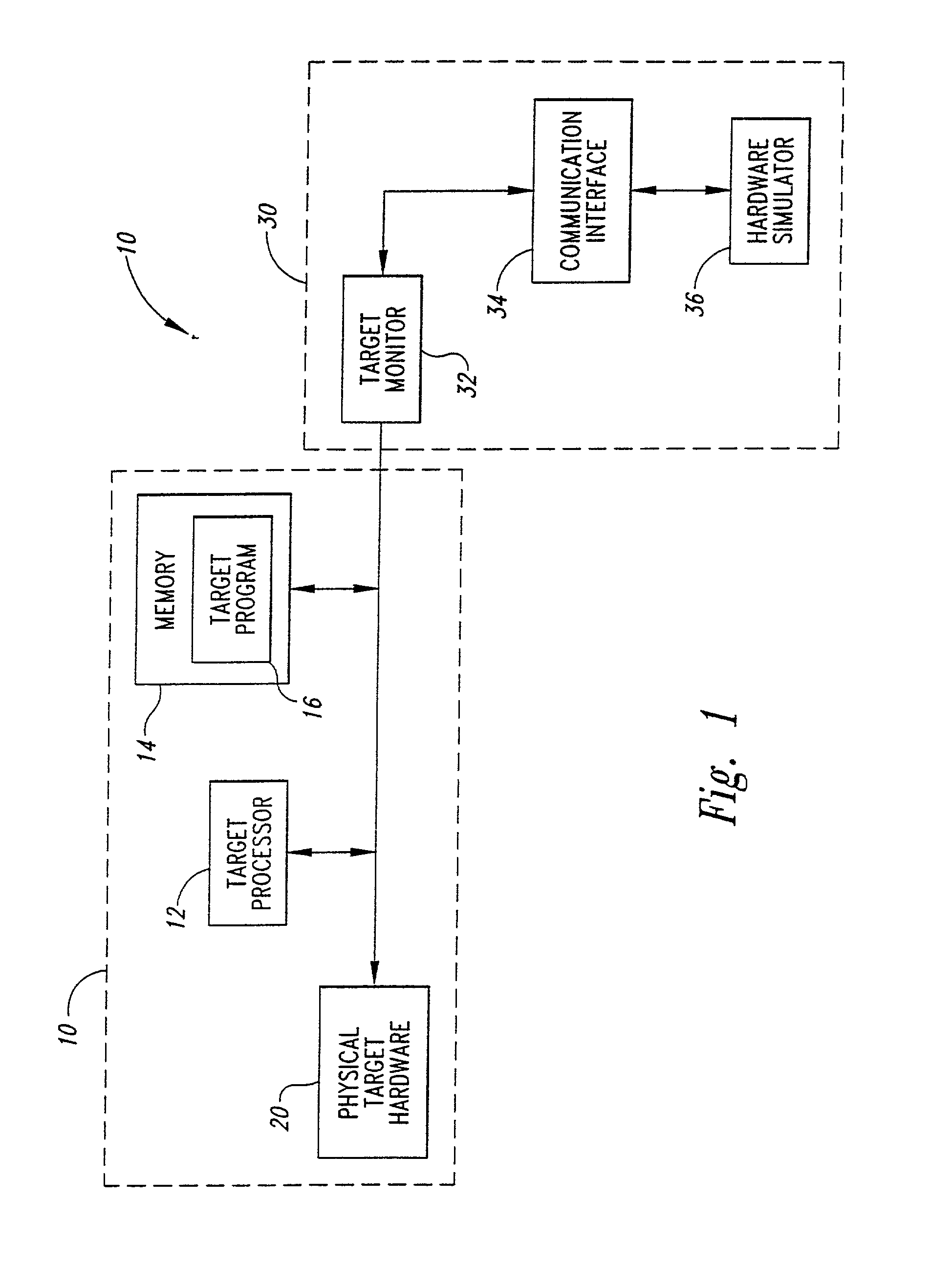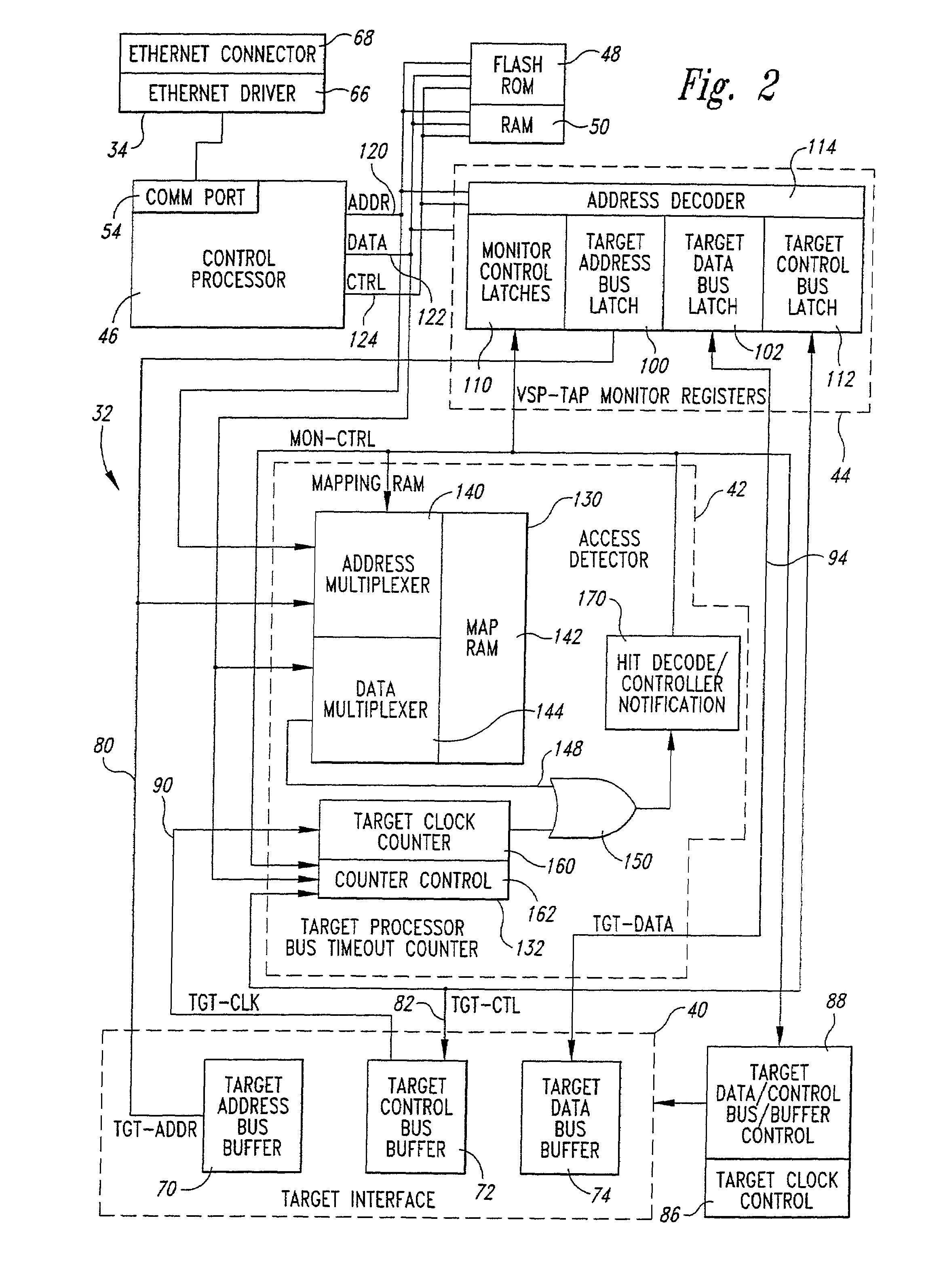System and method for testing an embedded microprocessor system containing physical and/or simulated hardware
a microprocessor and embedded system technology, applied in the field of embedded system testing, can solve the problems of inability to test a complete target program, inability to use the target software and hardware to test, and extremely slow and cumbersome hardware simulators
- Summary
- Abstract
- Description
- Claims
- Application Information
AI Technical Summary
Benefits of technology
Problems solved by technology
Method used
Image
Examples
Embodiment Construction
[0017]One embodiment of a system for testing embedded electronic systems is illustrated in FIG. 1. An embedded system 10 includes a target processor 12 coupled to a memory 14 that contains at least a target program 16 for execution by the target processor 12. The memory 14 may also include other program instructions and / or data for use by the target processor 12. The memory 14 may be read only memory (“ROM”), random access memory (“RAM”), or a combination of ROM and RAM.
[0018]Also coupled to the target processor 12 in the embedded system 10 is physical target hardware 20, which consists of the target hardware that has already been implemented. The remaining portion of the target hardware that is not included in the physical target hardware 20 is simulated, as explained below.
[0019]A system 30 for testing the embedded system 10 includes a target monitor 32, a communications interface 34, and a hardware simulator 36 that is coupled to the target monitor 32 through the communications i...
PUM
 Login to View More
Login to View More Abstract
Description
Claims
Application Information
 Login to View More
Login to View More - R&D
- Intellectual Property
- Life Sciences
- Materials
- Tech Scout
- Unparalleled Data Quality
- Higher Quality Content
- 60% Fewer Hallucinations
Browse by: Latest US Patents, China's latest patents, Technical Efficacy Thesaurus, Application Domain, Technology Topic, Popular Technical Reports.
© 2025 PatSnap. All rights reserved.Legal|Privacy policy|Modern Slavery Act Transparency Statement|Sitemap|About US| Contact US: help@patsnap.com



